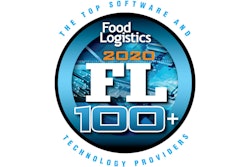
As soon as Pfizer, Moderna and AstraZeneca announced promising results from their respective COVID-19 vaccine trials, the public’s attention began to shift from research and development to distribution.
Urgent and worldwide demand for vaccination creates an immense logistics challenge. Distributors and healthcare providers will need to navigate the vaccine cold chain, a specialized, temperature-controlled supply chain hampered by inefficiencies and limited infrastructure.
As leaders work quickly to optimize and reinforce the cold chain, many will turn to the location technology they’ve used to optimize supply chain management for decades.
Minimizing risk in real time
Improving a supply chain often starts with operational visibility. Internet of Things (IoT) sensors and real-time data analysis tools can be key tools for logistics companies to collect data throughout a product’s manufacturing and distribution. Adding location technology, like a geographic information system (GIS), creates valuable tracking and visualization capabilities.
In the case of the vaccine cold chain, the combination of IoT and GIS could be key to preventing losses. Vaccines degrade quickly and must be kept within a specific temperature range. Public health guidelines note that even minor deviations can render a vaccine ineffective.
Approximately 25% of shipped vaccines are compromised due to poor temperature management, according to a 2019 report from the International Air Transport Association. The report estimates that temperature-related pharmaceutical damage costs the healthcare industry in excess of $34 billion each year.
For the people and economies depending on a COVID-19 prophylaxis, ineffective cold chain management will be especially costly.
These are precisely the kinds of risks that can be minimized with location intelligence and greater supply chain visibility. The concept has been applied to reducing perishable food waste by using IoT sensors to track temperature shifts during shipment. Using smart maps to track a shipment’s location and temperature adds vital environmental context and transparency in a segment of the supply chain where the risk of disruption is high.
Businesses that monitor live data on a GIS-based map are able to react in real time, as FedEx does to manage its fleet of planes. For vaccine distributors, such situational awareness can expose flaws in the cold chain and help prevent spoilage. Supply chain managers might re-route a delivery if the power is out at its planned destination, or alert transporters if temperature inconsistencies are detected in transit.
For many products—and especially the COVID-19 vaccine—the ultimate goal is faster delivery with fewer losses. Location-based visibility will help cold chain distributors achieve this level of efficiency as the world inches closer to the pandemic’s end.
Finding and filling critical gaps
Efficiency is one attribute of successful vaccine distribution; equity is another. The Coronavirus disease (COVID-19) virus can’t be stopped unless the vaccine is broadly administered. But, the cold chain, with its specialized equipment and processes, is inherently an inequitable system. It favors high-resource communities with ample transportation options, a consistent power supply, and a trained workforce. Places and populations that lack these amenities must be identified, and steps must be taken to ensure vaccine accessibility—tasks more easily accomplished with smart maps that highlight coverage gaps.
Such maps could take the form of a supply chain digital twin, a virtual copy of the real world that can be used to test a variety of scenarios and enable smarter responses to supply chain conditions.
For example, each of the three vaccines currently up for approval has different storage requirements.
The Pfizer vaccine’s temperature range can only be maintained with an ultracold freezer or dry ice.
Moderna’s vaccine must be kept frozen, but standard freezer temperatures suffice.
AstraZeneca’s can be stored in a standard refrigerator.
With a digital twin, stakeholders can plan their distribution strategies. Some parts of the United States, for instance, have pre-ordered from Pfizer, but don’t have ultracold storage. Many plan to rely on dry ice, but what if high demand causes a shortage similar to recent runs on personal protective equipment (PPE) supplies, and as a result, dry ice prices rise? If it turns out to be more cost-effective to install an ultracold freezer, planners will need location intelligence to identify the most strategic location within the community.
Alternatively, some places won’t have the option of freezer storage at all, including certain regions of Africa that rely solely on solar-powered refrigerators. Local leaders will need to ensure that these communities have access to an approved vaccine that can be stored safely at warmer temperatures. A digital twin of the cold chain could highlight pathways to equitable distribution in those areas.
A location-based solution for a location-based virus
Just as COVID-19 has spread from place to place, the vaccine must follow geographic pathways to support a global recovery. Unlike the virus, however, the vaccine’s possible routes are limited by the cold chain. Location intelligence is the key to understanding where vaccines need to go and how to get them there.
As public health organizations continue to approve vaccines and the distribution process begins in earnest, location technologies will likely prove themselves an essential tool in supply chain optimization.
This article originally appeared in Esri’s WhereNext magazine.




















